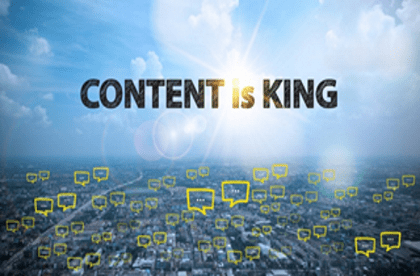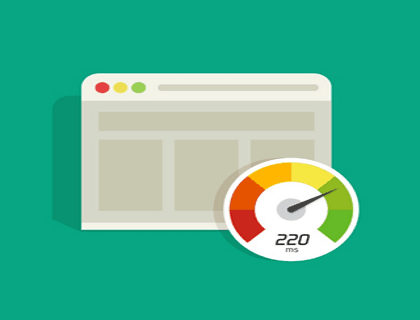Okay so here’s the deal.. If you want to boost your site’s ranking then you must practice good On-Page SEO techniques! There’s no other way around!
Before we dive in the advanced techniques, let’s cover the basics first.
What is On-Page SEO?
Here’s what On-Page SEO is;
“On-Page SEO means techniques used to optimize the web pages of a site to achieve higher rankings in the search engine”
As clearly stated in the above statement, On-Page SEO lets you achieve higher rankings in search engines. It is an essential part of your SEO campaign and if used properly, it can turn out to be the deadliest weapon in your arsenal.
Advanced On-Page SEO techniques:
Here’s what you need to do to achieve better rankings in major search engines.
1- Quality Content
Well you must have heard the phrase “Content is the king” and believe it or not, it is actually true! It might sound obvious but it is the fundamental part of your SEO campaign. If your content isn’t good enough, how can you expect it to get a ranking in search engines?
Gone are those days when people used to just spin the articles and stuff it with keywords! These days, if you want to get ranked it is absolutely essential to actually provide quality content to your readers.
 Here’s how you can write quality content:
Here’s how you can write quality content:
- Write about what people are searching for! If you can find a problem that people are searching for and then provide solutions to that problem then believe me people will love your content! You will lots of social signals to your site which will be great.
- Add lots of images and videos in your content to increase user engagement.
- Make attractive headlines to ensure that people actually open your articles.
2- LSI Keywords
Instead of writing your keyword again and again in your content, you should use LSI keyword!
Now you might be thinking what the hell are LSI keywords? Well, here is your answer
LSI keywords are the synonyms of your targeted keyword and Google uses them to determine your page’s relevancy.
 Here is what you can do to find LSI keywords:
Here is what you can do to find LSI keywords:
Just type in your targeted keyword in Google search bar and scroll down to the section where Google shows “Search related to.” Let’s say my targeted keyword is On-Page SEO, so the LSI keywords in my case will be “On-Page SEO tutorials, On-Page SEO factors and so on.”
3- Optimization Of Images
Some people don’t bother to optimize the images in their content which is a big mistake! Make sure that you optimize your images to achieve better ranking in search engines.
Image optimization is really a simple process and only take a minute or two. Here’s how you can optimize images for search engines:
Include your targeted keyword and some LSI keywords in the title of the images. Also, include keywords in the Alt text of images.
4- Site Speed
 Site speed plays an important role in On-Page SEO and believe it or not, if your site is taking more than 4 seconds to load then you are losing customers!
Site speed plays an important role in On-Page SEO and believe it or not, if your site is taking more than 4 seconds to load then you are losing customers!
You can check your site’s speed at https://gtmetrix.com/
If you want to improve your site’s speed you could delete unused plugins from your WordPress panel, use image compression plugins and/or switch to faster hosting, use CDN service.
Read Best Ways to optimize WordPress website for speed
5- Responsive site (Mobile Version Website)
As the title suggest, it is essential to have a responsive design. These days, more and more people use their smartphones and tablets to visit different site’s so if you haven’t got a responsive design, you must focus on it immediately!
Make sure that your site is mobile friendly otherwise you might face some serious consequences.
6- URL Structure
URL structure matters a lot in On-Page SEO, and if you want to achieve better results with your SEO campaign, you must use SEO-friendly URLs.
An SEO friendly URL:
- It has Targeted keyword.
- And is short; contains maximum 5 words!
7- Usage Of TAGS
The significance of tags have dropped over the past few years, however, it is still a good strategy to use tags.
Your content should include multiple heading tags.
If you don’t have a clue how to use tags, here’s what you can do.
H1: Use the H1 tag to write the headline of your content. Also, make sure that your write your targeted keyword in the headline.
H2: Usage of H2 is generally for creating headings. Your targeted keyword must be included in at least one H2 Tag.
H3: with H3, you can create sub-headings. Also, you can use it to write LSI keywords.
8- Internal linking
Internal linking can be a great way to pass link juice to the different pages of a website.
If one page of your Website is of high authority, you can use internal linking to pass on the link juice to pages with low authority. Not only this, but internal linking also allows users to navigate your site in a friendly manner.
9- Outbound linking
Google uses outbound links to determine the page relevancy of the content of the page. While creating the content for your site, always link it with at least 4-5 high authority sites, this will help Google determine the content’s topic and will do wonders for you.
10- Modifiers
If you are targeting Long-tail keywords, using modifiers can be a great strategy to outrank your competitors.
Try adding 2017, Best, How to, Guide, Top 10 or anything similar to it, and you will see a positive impact on your site.
Use these SEO practices and you will definitely see a considerable change in your page rankings.
Let us know how these strategies work out for you.



